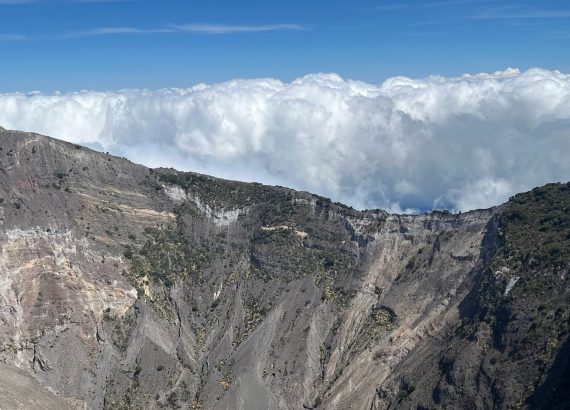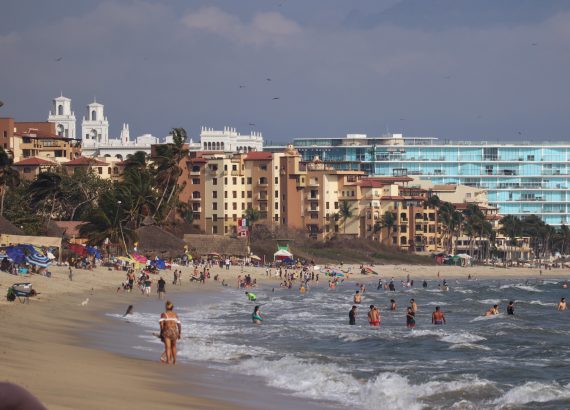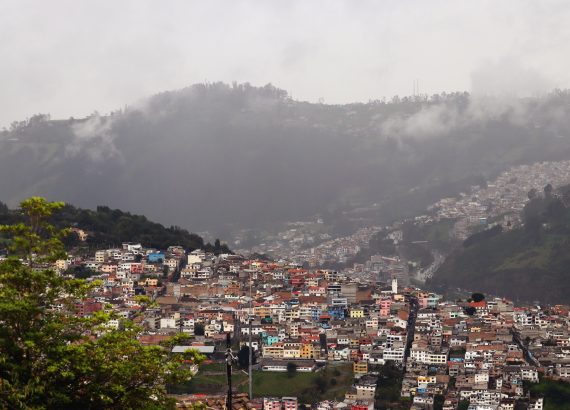It was time to move on from Merida to the next city, heading two hours southwest to the historic city of Campeche. A city that reminds me so much of Old San Juan, Puerto Rico, where my parents were born. The similarity is mostly in its architecture, narrow sidewalks, cobblestone streets and the fortress that surrounds the city. Most of it well-preserved, a defensive walled city going back to the 1600s, created for the sole purpose of protecting itself from pirates. Yes, pirates, much like those we see in movies….
Before I dwell into what makes Campeche so appealing, let me update and share a bit about my nomadic experience now going on two months. As compared to my first 30 days in Mexico, I am mostly in good health other than regaining back a few pounds and my usual backache woes. Much like Merida, the food here is seasoned, salty and fatty. I am still working on managing a routine that allows me to focus on several projects where I do not have deadlines. There lies the problem as I am a deadline driven individual imposed by others holding me accountable. I have made some progress by first implementing a digital planner to create steps toward getting things done. It’s also helpful in prioritizing what I want to achieve amid many distractions when visiting a new place. This is still a work in progress. There are days of both restlessness and isolation that challenge me, but they are few and expected. I am sometimes amazed how time disappears with some days being less productive than others. Originally, I had only planned to stay 2 weeks in Campeche but decided to stay through the month of November to make it easy for me to travel to Miami and attend the 2023 Art Basel. Actually, the additional time in Campeche was indeed wonderful in my further exploration of what makes this vibrant colonial city tick.
But First, a Bit of History
Way before the Spaniards came to what is known as Campeche the Mayans had a thriving community but not for long. By the 1500s they were defeated, and the city of San Francisco was birthed becoming a strategic location in the Gulf for further Spanish conquest. As Campeche prospered, it was continuously attacked by English and Dutch pirates, at one time even occupied by them. This eventually led to building a fortress surrounding the city of which most of it stands today. It’s important to note that over time, the walls also served as barriers to those who the founding fathers did not believe should live within the fortress. The rural areas beyond the city limits continued to be exploited for dyewood and agricultural products, creating haciendas (plantations) where the Mayans became indentured servants along with African slaves imported to harvest the land. This pattern of colonization and exploitation is similar among many regions of Mexico, including what is now the state of Campeche.
Campeche … Mexico’s Only Fortress City
El Centro Historico (Historic Center) of San Francisco, Campeche is quite small, consisting of 9 blocks facing the water and another 7 facing land. A walkable community, a port city with beautiful sunsets of the Gulf. Outside the historic center, there is the Malecon (Boardwalk) and several neighborhood barrios and commercial centers surrounding El Centro Historico. I rented an Airbnb apartment right smack in the middle of El Centro on a block that is composed mostly of commercial retail and businesses. A bit busy and noisy at times, but I wouldn’t have it any other way.
Becoming a UNESCO Heritage Site
Campeche received its UNESCO designation in 1999. How the city received this prestigious designation piqued my curiosity and led me to meet with the city’s tourism manager. This was a concerted effort that required the support of federal, state and city resources. It took the city 10 years of significant investments before they were designated as a UNESCO site. The Centro was in bad shape with many abandoned and destroyed properties. All telephone poles, cables and signage had to be removed, as well as addressing a series of infrastructure problems and the restoration of historic monuments and buildings. This required relocating households to a newly created community to increase commercial and tourism opportunities in specific blocks. Once most of these issues were addressed, the city then had to develop facades that were authentic to its past using traditional techniques and materials. The Centro still today has quite a bit of abandoned properties, with some being just lots behind the facades. I included photos of what these properties look like behind these colorful walls.
The city is continuously working on attracting both businesses and homebuyers willing to follow the strict regulations imposed by UNESCO in rebuilding. There are already many boutiques’ hotels and renovated homes such as the one I am residing. If you are looking to retire in Mexico, this just might be the place, since Merida’s real estate is becoming highly competitive. The newly constructed Mayan train inaugurated this December will provide transportation to and from Cancun, Tulum, Merida, and Campeche creating redevelopment opportunities for these and other communities, increasing more economic tourism to the Yucatan peninsula with its fair share of environmental concerns.
Walking the Streets of Campeche
Walking this historic, picturesque center city most mornings and evenings (4- 5 miles a day) will remain an unforgettable experience for me. On a daily basis, this is a heavy traffic commerce community that starts its day by 8:30 AM when businesses and government begin to open their doors through the late evenings. My street, which is almost all retail, is packed with pedestrians and traffic until 8:30 PM.
The city grid is easy to follow. The city’s fortress walls, and its many historic landmarks and plazas, serve as guiding posts. The sidewalks are very narrow, requiring pedestrians to be gracious and courteous, especially on sunny days seeking the shaded areas and on raining days where they are very slippery. Many of the sidewalks are of uneven heights, almost feels as if you are taking a stepping class. The more reason to be careful you don’t trip or accidentally fall off to the street, which can be up to 2 feet down. The streets are all one way with hardly any stop signs or lights. Pedestrians do not always have the right of way and the drivers speed a bit. Being a pedestrian requires staying alert.
Although the trash is collected mostly every day, and the city looks clean, you will occasionally come across the smell of sewage. This is, after all, an ancient colonial city. None of this bothered me as walking every day through this architectural wonderland taking photos and discovering new places to eat or learn about the city’s history and community life was immensely rewarding. Visitors can walk several of the pedestrian-only cobblestone streets to shop and eat, climb the top of the fortress walls, visit its 17th century cathedral and its many churches, and walk the Malecon for lovely sunsets and a view of the Gulf. I found this city to be magical and captivating. However, like all foreign cities, it also has its own peculiarities, problems, and traditions. Here are a few that left me a bit puzzled or curious.
Here the retail stores appear to be a bit like a discount alley or outlet. A combination of Kmart, Walmart, Family Dollar, and TJ Maxx divided up into 12X12 stores with a repetition of many of the same products and apparels. I am clueless on how they compete with so much of the same being sold next to each other.
I was struck by the many stores that sell party related items. In fact, there were several stores solely dedicated to party dresses for Quinceaneras (Mexican’s sweet sixteen). So here is where traditions and customs comes in. As a predominately Christian community, family events are an essential part of Mexican daily life, from baptisms to birthdays, Quinceaneras, engagements, marriages and holiday parties among the barrios and small towns surrounding El Centro. I noticed in Merida and Campeche young girls being photographed celebrating their Quinceaneras, wearing princess petticoat ball gowns. Still very popular, less so in the US.
There is considerable poverty in all the state of Campeche. I was intrigued by the large number of solo vendors of all ages that sell homemade foodies, snacks, and household items. Some use kiosks or wheel carts. Others walk around with just a box of goodies strapped to their bodies. This is also the case in Merida but so much less than in Campeche. For these solo vendors, this is a hard life, all day from morning to late evening, either begging or hawking their wares from street to street and person to person. Clearly a way of life that is mostly about surviving. Yet, you witness everyday families coming and going enjoying family outings. In the parks and at El Malecón, children are everywhere, along with young lovers affectionally engaging with each other. No one seems to be in a hurry. A sense of peace and tranquility, even as life by our standards, seems to be hard.
What Else to do in Campeche
There are quite a number of Mayan archaeological sites to visit outside of the city. I signed up for two—Edzna and Calakmul out of six others. I highly recommend Edzná. It is a shorter distance to get to and it is quite magnificent. You may climb several of its temples which provides an amazing view of what is left of this Mayan city. If only time travel existed to see how these civilizations thrived back then and to better understand their evolution, as there are still so many unknowns.
The site Calakmul is one of the largest and most significant Mayan cities deep in the rainforest that the Spaniards never got to conquer. It takes almost 6 hours to get there with the last 90 minutes going up a gravel road with way too many twists and turns, much like an amusement park ride. I got carsick and had to ask the van driver to pull over for me to vomit. This also happened twice more on our way back. There was one other person who also got sick, which helped me get a bit of my dignity back. The visit was disappointing as this site is not well taken care of by the government. I found the exhibits and signs old and worn and the vegetation gradually taking over the view. A museum is currently under construction near the site, which will shed more light on the significance of Calakmul within the peninsula. Let there be no doubt, I complained to both the tour guide and the tourism manager.
One final tour was visiting several small historic towns that are part of the road to Camino Real. These towns became the stops for all those who traveled to or from Campeche to Merida back then by horse and carriage. Today, each of these towns focuses on a particular craft, such as artisan breads, hats, embroideries, and other goods sold to other cities. You get to see their crafts, tour their facilities, and explore the authenticity of small-town rural living.
Final Note
If you are a lover of architecture, culture, and cuisine, I recommend a stay of 3- 7 days to enjoy all that this historic city offers. My photos are of all aspects of daily life, from the city’s architecture to local customs and traditions and what is happening daily on the streets following the narrative. My next stop will be the city of Oaxaca, moving away from the Mayan region where the Zapotecos and the Mixtecos live.
As always, remember to click the center of the photos to access a full view of each photo.

















































































No Comments